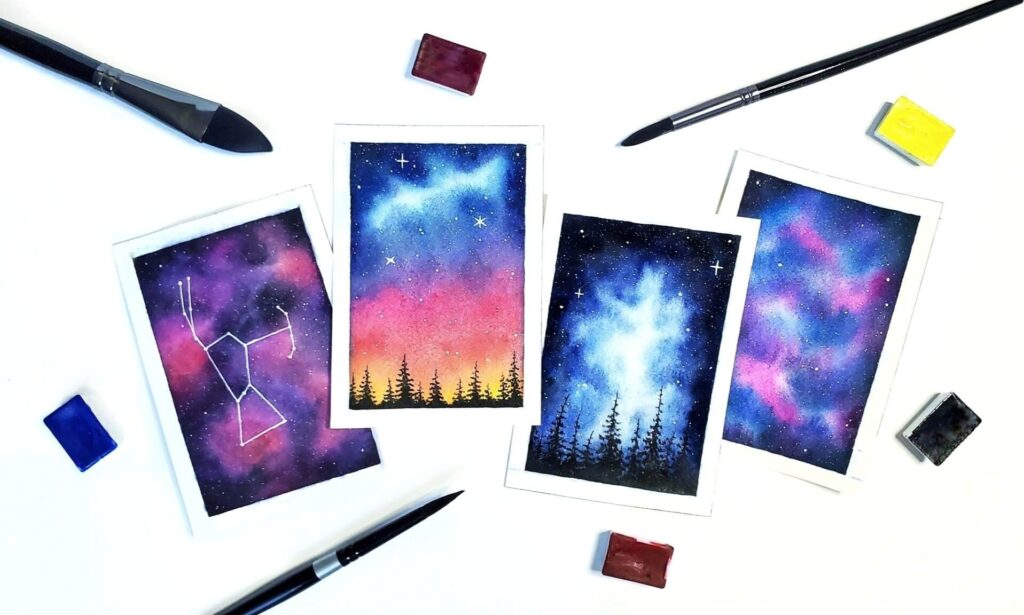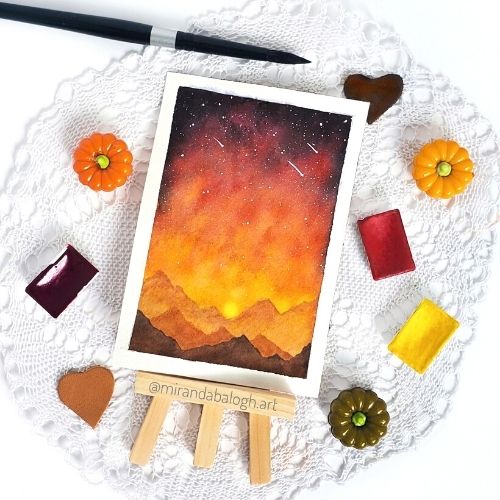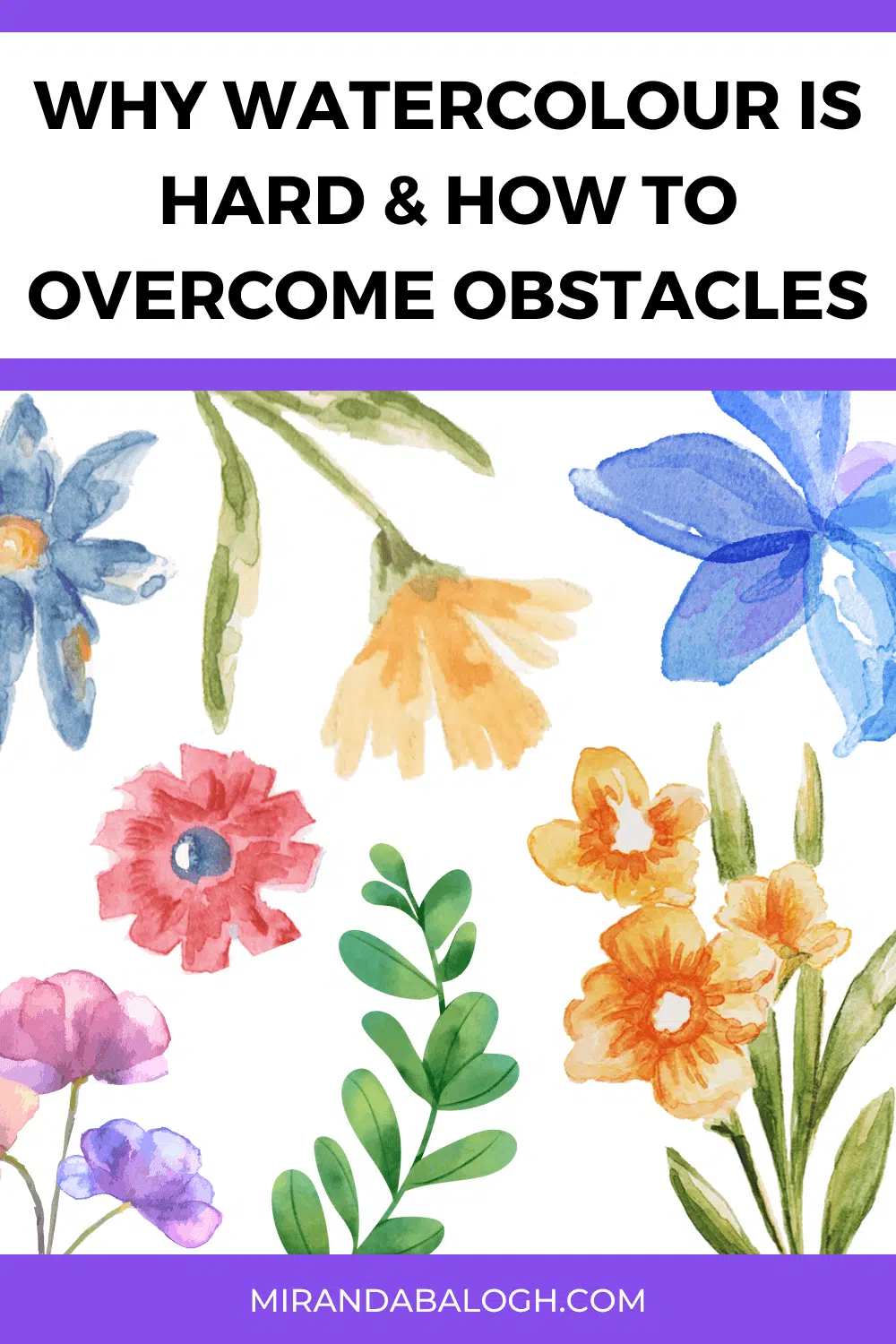Whenever you create or buy a watercolour painting, you want it to last forever.
So you wonder: Do watercolour paintings fade, or do they stand the test of time?
Watercolour paintings fade if the paint pigments have low lightfastness or the artwork was created on acidic paper which turns yellow. In addition, if the painting is exposed to environmental hazards such as light, heat, and humidity, it will become dull and fade over time.
Fortunately, there are many clever ways to preserve a watercolour painting’s luminosity and delicate beauty.
Keep reading to discover the best practices that will protect your artwork.
Table of Contents
How Long Will A Watercolour Painting Last
History reveals that watercolour dates back to the Paleolithic Age when it was first painted on cave walls. Watercolour paintings also date back to ancient Egypt and ancient China. It also played a role during the Renaissance.
Many of these old pieces have survived to the modern day, thus proving their durability and longevity over hundreds and thousands of years. So, what ensures that watercolour will last a long time?
A watercolour painting can last for centuries if it is made from high-quality professional grade pigments that have good lightfastness and permanence ratings. Furthermore, if the artwork is painted on acid-free paper and is not exposed to environmental damage, it will endure.
Professional grade paints possess pigments are pure and high-quality, so their vibrancy will last longer. These pigments are more resistant to light damage, which makes them resistant to fading.
What’s more, avoiding fugitive pigments is ideal because these pigments have less permanency. Especially when they’re exposed to environmental factors like heat and sunlight.
For example, carmine and red pigments are notorious for their fugitive qualities, which means they’ll fade more easily.
Lastly, acid-free paper is recommended because it won’t distort the colours. Since it is resistant to turning yellow, you don’t need to worry about the pigments losing their integrity.
Related: Check out this article to learn about the best acid-free and high-quality watercolour paints and paper.
How to Protect Watercolour Paintings from Fading
As we have discussed, there are certain situations that you must avoid if you wish to protect your paintings from harm.
For example, where you choose to hang your painting has a huge impact on the preservation of the artwork.
You can protect a watercolour painting from fading by making sure the painting is not exposed to environmental hazards such as heat, humidity, sunlight, and smoke. Instead, the best practice is to hang watercolour paintings in a dry, cool room with a consistent temperature.
Moreover, you should make sure your watercolour paintings are not hung near air conditioners, humidifiers, or heaters.
Temperature that is too hot or too cold can negatively affect the pigments and have adverse effects on the integrity of the paper.
For example, too much moisture in the air can warp the paper. And being exposed to heat can make the paper become dry and brittle.
This is the reason why museums display oil, acrylic, and watercolour paintings in temperature-controlled rooms as they provide the best environment in which these paintings can thrive.
Related: Learn about the 3 best qualities of watercolours that all watercolour paintings should possess.
Do Watercolour Paintings Fade in Sunlight
Nothing is worse than seeing your beautiful watercolours fade into a dull blob.
And one of the worst ways to ruin a watercolour painting is to expose it to sunlight.
Never hang watercolour paintings in direct sunlight because the ultraviolet rays are damaging to the pigments. The rays deteriorate the pigments and make the paper become brittle, thus causing the painting to fade and lose its vibrancy.
What’s worse is that the transparent nature of watercolour means the thin layers will show the deterioration more obviously. This is one of many reasons why your watercolours look bad.
So, be smart and keep your watercolour paintings out of direct sunlight.
Also, it should be noted that fluorescent lightbulbs are not good for watercolours. Essentially, keep these paintings away from any kind of direct light source.
This is why museums are not brightly lit and why observers are not permitted to use flash when taking photos of the artwork that’s on display.
In other words, store your watercolours in an environment in your home that mimics a museum.

How Do You Preserve A Watercolour Painting
The best way to protect your watercolour artwork is to preserve it in some kind of framework to shield it from potential harm.
To preserve a watercolour painting, it’s best to frame it by using acid-free materials. Framing a painting in glass protects the artwork from being touched directly. And glass with ultraviolet filtering protects the watercolours from the damaging effects of ultraviolet light.
The safest way to preserve your watercolours is to frame your painting. There are many types of frames to choose from, but make sure to protect the artwork by framing it in conservation glass.
And make sure the glass has ultraviolet filtering, meaning it will offer protection against the harmful rays of ultraviolet light.
Preserving your painting in some kind of glass also protects the painting from being touched.
After all, you don’t want anyone (not even yourself) to touch the painting because the oils from your fingertips can affect the integrity of the paper.
Related: Check out this article to learn how to prevent watercolour paper from becoming overworked.
Conclusion
So, do watercolour paintings fade?
By now you understand that watercolour paintings fade only if they are made with low-quality materials and if they’re exposed to environmental damage.
In other words, as long as you use high-quality pigments, acid-free paper, and preserve the painting properly in some kind of protective framework, it will last for a very, very long time.
Once you’ve done that, all you need to do is to hang your artwork somewhere in your home that is on the drier side and which is temperature controlled.
That way, your beautiful watercolour painting has the best chance of standing the test of time.
Now it’s your turn!
Do you make your watercolours fade proof by following any of the tips in this article? Share your thoughts in the comments below!

Miranda Balogh
Artist & Online Educator






I’ve always wondered about this and I’m so glad for your advice! Thanks for sharing!
You’re welcome! Glad I could help.
Great read! I recently bought some supplies for a watercolor painting and will have to check to make sure I ordered good quality paint. Thanks!
Thank you! Have fun painting.
My husband enjoys painting, so I’ll have to tell him about paints that don’t fade. Thank you for your advice.
I’m sure he’ll appreciate the information!
Hi Miranda, yes I totally agree… I just started watercolor painting since the start of pandemic. I am using high quality pigments and paper and yes some of my works are hanging on my wall and they are still good as new.
I’m glad to hear you took up watercolour painting. And it’s great that your paintings are doing well!
Wonderful advice regarding watercolor painting. I wondered about the sunlight. Also thank you for including how to preserve the water paint. Thank you for sharing. 🤗
Pastor Natalie
You’re welcome! I’m glad this article was helpful.
This is great information! I had no idea that watercolor paints could fade. Now I know to protect my paintings and my kids artwork by using the right materials!
I’m glad you found this information helpful!
Thank you for sharing this, very helpful advice. I love to use watercolor paints, & was wandering how to store my paintings the best way 💜
You’re welcome! Now you know how to preserve your watercolour paintings for a long time.
My daughter has some beautiful watercolour paintings she created. Thank you for the insight on how to preserve the paintings!
Thank you! I’m glad you enjoyed this article.
This was a great blog
Thank you!
I didn’t realise where you hang your painting has an effect on being able to preserve it! Very interesting read- thank you!
Yes, the environment impacts the preservation of a watercolour painting. So hang your paintings in dry and temperature-controlled rooms if possible.
I’ve noticed some of my watercolor paintings have faded! (probably due to sun) Thanks for the preservation tips, I will definitely use them 🙂
Sunlight can damage the pigments and cause premature fading, so hang your watercolours in a place that doesn’t receive direct sunlight. Thanks for commenting!
Thanks for the great article…
How do I store watercolors that I don’t want to display? I just want to put them away to get out later; I don’t want to put them under glass and hang them up.
Thank you! When I don’t display paintings on my walls, I put them in a folder or a photo album since my watercolour paintings are small enough to fit in the sleeves of an album. Other than that, keep the artwork out of sunlight and they’ll be fine.
Can an ~ 30 x 30 inch water color painting withstand the rigors of the harsh environment of an arena with wide swings of temperature and humidity? The stadium is used mainly for figure skating and hockey? It would be displayed under a plexiglass panel.
Good question! If the painting is protected by some kind of glass, it should be okay. Ideally, it should be in an environment with a stable temperature. But I think as long as it’s not directly in sunlight or next to a heater or AC, the painting should be fine.
If the paintings are stored in sleeves, be sure they are archival quality. Some plastics have chemicals that damage paper.
That’s very important, so thank you for sharing this wonderful piece of advice!